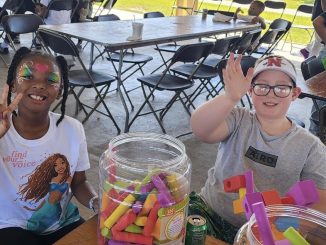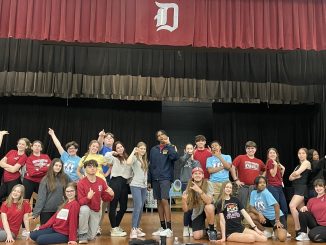
Though much of his work for the Navy remains classified, a former Des Allemands resident finally received some long-overdue recognition for his contributions in the private sector as a deep sea diver.
Van T. Bell, who rose to the rank of aquanaut, was posthumously inducted into the Association of Diving Contractors International Hall of Fame. Aquanauts like Bell spent more than 24 hours in an underwater habitat in 1969 in order to perform experiments.
“He was a very humble man,” Gloria Bell, the late Van T. Bell’s wife, said in the acceptance speech. “But his work being recognized in such a manner by [the Association of Diving Contractors] would have meant the world to him.”
How Bell developed that knowledge of deep sea diving is a matter of legend and, to some degree, is still classified by the United States Navy. Toward the end of his career, Bell was one of the crew members for the SEALAB III experiments, which included famed astronaut-turned-aquanaut Scott Carpenter.
SEALAB was an effort by the U.S. Navy to show that humans could live and work as much as 600 feet below the ocean’s surface for extended amounts of time. Intrigue and tragedy plagued the SEALAB III experiments as one of Bell’s fellow divers, Barry Chapman, died as a result of an improper mixture of chemicals in his breathing tank.
At the very height of the cold war, suspicions arose about the possibility that the SEALAB mission had been sabotaged due to Chapman’s death. With nearly 20 years of service, Bell’s career was unexpectedly extended for another year and his family was sequestered on a dairy farm near San Francisco while the Navy completed an investigation into the matter.
Having been trained extensively by the Navy in deep sea diving techniques, the Tennessee-born Bell quickly found work in south Louisiana after his service was complete, settling in Des Allemands.
“We promised [our daughter] a horse, so after the Navy we found a big enough lot over in Des Allemands,” Gloria said.
The family spent roughly eight years as residents of Des Allemands until new work opportunities took Bell and Gloria to New Iberia. Bell later passed away in 1996.
Gloria said her children, including Vanessa, who works at the Bayou Veterinary Clinic in Luling, frequently encourage her to sell her house and move back to St. Charles Parish. Gloria said that her husband was humble about his work, even though it sometimes entailed the gruesome task of recovering bodies. However, he was a local pioneer in saturation diving.
“At the awards gala, I was told by [Van’s former employer] that, until Van came along, they didn’t have saturation diving,” Gloria said.
Saturation diving is a rigorous process wherein divers “saturate” their bloodstream with helium in order to match the pressure of the depth of water around them. This is done in order to allow divers to stay underwater for days, and weeks, at a time without getting affected by decompression sickness, also known as “the bends.”
To avoid this illness, divers returning to the surface must undergo a lengthy decompression process, wherein they are brought up from the depths slowly. Sending divers on one long dive, as opposed to conducting the lengthy decompression for a series of small dives, reduces the cost of deep-water work. Offshore oil rigs frequently use deep sea saturation divers for repairs and maintenance.
Gloria said that their son, Richard, followed in his dad’s footsteps and today conducts his own saturation diving.
“When he was in college, he would sweep floors or do whatever he could during the summer just to be out there with his father and the other divers,” Gloria said.
Bell is one of only 28 inductees into the hall of fame.




Be the first to comment